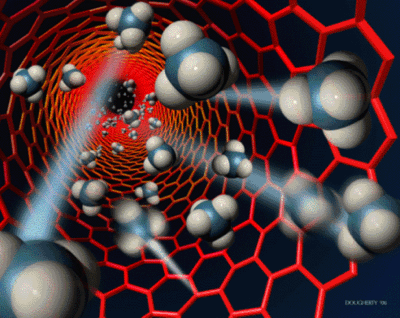Nanotechnology involves materials and compounds that are on a nanoscale, 1-100 nanometers (10^-9 m). Due to the extremity in size, these materials have unique properties that can benefit the electronics industry. The world around us is made up of atoms and molecules, so it is essential that we learn to manipulate them in order to benefit our society.
On the nanoscale, materials experience “quantum effects” and their behaviour and properties depend on size. As a result, desired characteristics of these nanomaterials can be fine-tuned by simply changing the size of the particle. This unique trait of nanomaterials is referred to as “tunability“, which is what makes this technology so relevant and applicable in all fields of science. Some examples of properties that are altered are: melting point, fluorescence, electrical conductivity, magnetic permeability, and chemical reactivity. For the purpose of this blog post, I will only be discussing the importance of nanotecnology in the electronics industry.

The application of nanotechnology in electronics could potentially improve the capabilities of electronic components while simultaneously reducing their weight and overall power consumption. Here are 2 relevant examples:
- Improving electronic display screens on devices such as phones, computers and tablets. The key will be reducing power consumption, as well as the weight and thickness of the screen.
- Increasing the memory density of computerised chips. Researchers are currently attempting to raise the bar by providing 1 terabyte of memory space per square inch of the chip.
As both scientists and society progress in the field of nanotechnology; the dream will be to one day possess unlimited function and power in the palm of our hands.
-Siriwat Chhem


One response to “Nanotechnology: The Future of Electronics?”